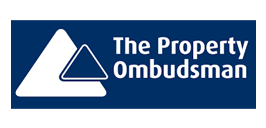
England is currently under a three-tier system to combat the Covid-19 pandemic, with London the latest region added to the highest tier after a 40% surge in coronavirus cases.
Parts of Essex and Hertfordshire will also move into tier three at midnight on 16 December, along with all London boroughs.
The good news is that under the government’s new advice, the housing market remains open for business, whether you’re buying, selling, renting or letting.
Across the board, estate agents remain open and physical property viewings are allowed, with comprehensive advice on how to follow social distancing guidelines inside homes.
Others in the housing market, such as conveyancers, tradespeople, and professional movers, can continue to operate too.
What the different tiers mean:
It’s worth remembering that Zoopla, like other property portals, is open 24/7. That means you can do a lot of your property search online, from exploring our news, guides and insights, and checking out the prices of recently sold properties, to registering to get instant alerts for exactly your type of property – and save as many searches as you want.
Richard Donnell, our head of research and insight, said: “We’ve already seen how the first lockdown led to people carrying out a once-in-a-lifetime re-evaluation of their homes and lifestyles, with a focus on prioritising space. And the latest restrictions will continue to support this trend – particularly for those who are more financially secure.”
Meanwhile, the stamp duty holiday is continuing to act as an incentive for buyers to complete a purchase before the tax break ends on 31 March 2021.
However, with different regions in different tiers, it’s a good idea to find out how your local housing market is operating in a Covid-19-secure way.
Tier 2 – high alert
Tier two is for areas with a higher or rapidly rising level of Covid-19 infections.
Anyone living in a tier two area must follow all of the tier one rules, and also not meet with anybody outside of their household or support bubble in any indoor setting, including their home or a public building.
Meetings of up to six people from outside the same household or bubble can take place outside in public spaces and gardens.
Find full details and the latest government guidance here.
What does tier 2 mean for the property market?
Under tier two, the majority of businesses can continue to operate as usual and this includes estate agents and other services related to moving house, such as conveyancers and removers.
Can I view properties in a tier 2 area?
Yes.
In-person property viewings can still take place, with appropriate precautions.
The same advice applies to tier two property viewings as it does in tier one.
This means property viewings can continue to take place with Covid-secure measures in place.
Such measures include the wearing of face coverings, regular hand washing, keeping doors and windows open for good ventilation during the viewing, and only two prospective buyers from the same household entering the property at a time. Sellers and the estate agent may choose to wait outside the property or decide not to be present while viewings are undertaken.
Open house viewings are not allowed at this time.
The government is encouraging the use of virtual viewings before visiting properties in person to minimise public health risks, and socially distant viewings.
If any member of either the household whose home is being viewed, or of the household viewing, shows symptoms of Covid-19 or is self-isolating, then in-person viewing should be delayed.
For the latest government advice in full check here.
Are estate agents in tier 2 open?
Yes.
However, as with tier one, the toughened tier system means more people are being encouraged to work from home where possible.
This might mean some agents choose to work from home, continuing to work digitally and opening their branch by appointment only.
Can I move house under tier 2?
Yes.
The government has been clear that the property market is staying open even as restrictions are toughened, and during the second national lockdown moving services continued with Covid-secure measures in place.
This means estate and lettings agents, removals, valuers and people in sales and lettings offices and show homes can to continue working under the tiered system.
Meeting with people outside your household or bubble “to facilitate moving home” is listed as one of the government’s exemptions from gatherings limits across all tiers.
Advice from the government encourages everyone involved in a home move to be as flexible as possible and to be prepared to delay moves, for example if one of those involved becomes ill with Covid-19 or has to self-isolate.
Which English regions are in tier 2?
East of England
- Bedfordshire and Milton Keynes
- Cambridgeshire, including Peterborough
- The following local authorities in Essex: Colchester, Tendring, Uttlesford
- The following local authorities in Hertfordshire: Dacorum, East Hertfordshire, North Hertfordshire, St Albans, Stevenage, Welwyn Hatfield
- Norfolk
- Suffolk
The following local authorities in Essex are in tier two until 12:01am on 16 December, at which point they will move to tier three:
- Basildon
- Braintree
- Brentwood
- Castle Point
- Chelmsford
- Epping Forest
- Harlow
- Maldon
- Rochford
- Southend-on-Sea
- Thurrock
The following local authorities in Hertfordshire are in tier two until 12:01am on 16 December, at which point they will move to tier three:
- Broxbourne
- Hertsmere
- Three Rivers
- Watford
East midlands
- Northamptonshire
- Rutland
London
- All 32 boroughs plus the City of London are in tier two until 12:01am on 16 December, at which point they will move to tier three:.
North west
- Cumbria
- Liverpool City Region
- Warrington and Cheshire
South east
- Bracknell Forest
- Brighton and Hove
- Buckinghamshire
- East Sussex
- Hampshire, including Portsmouth and Southampton
- Oxfordshire
- Reading
- Surrey
- West Berkshire
- West Sussex
- Windsor and Maidenhead
- Wokingham
South west
- Bath and North East Somerset
- Bournemouth, Christchurch and Poole
- Devon, including Plymouth and Torbay
- Dorset
- Gloucestershire (Cheltenham, Cotswold, Forest of Dean, Gloucester, Stroud and Tewkesbury)
- Somerset (South Somerset, Somerset West and Taunton, Mendip and Sedgemoor)
- Wiltshire and Swindon
West midlands
- Herefordshire
- Shropshire and Telford & Wrekin
- Worcestershire
Yorkshire
- City of York
- North Yorkshire






